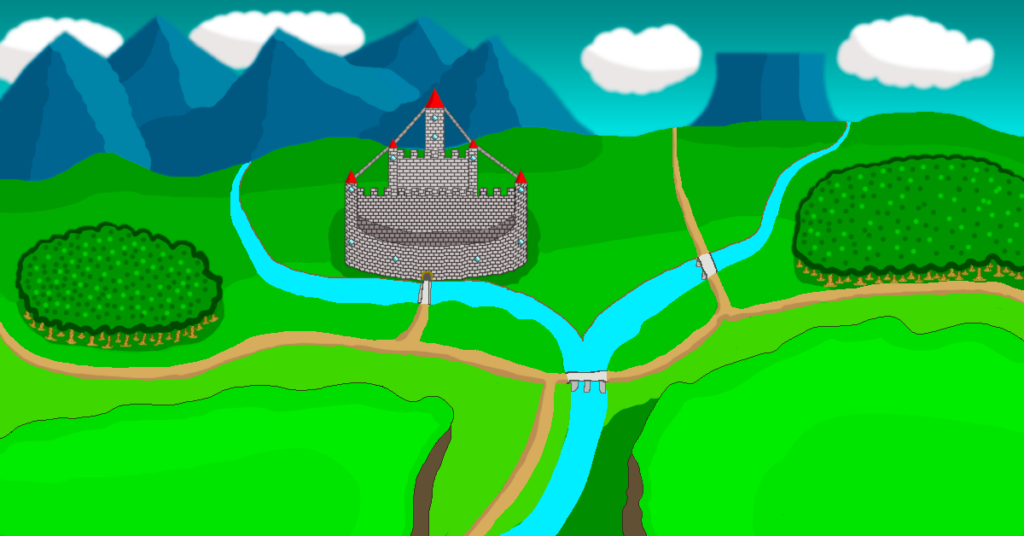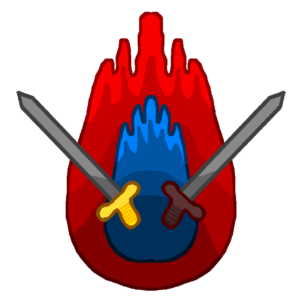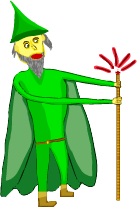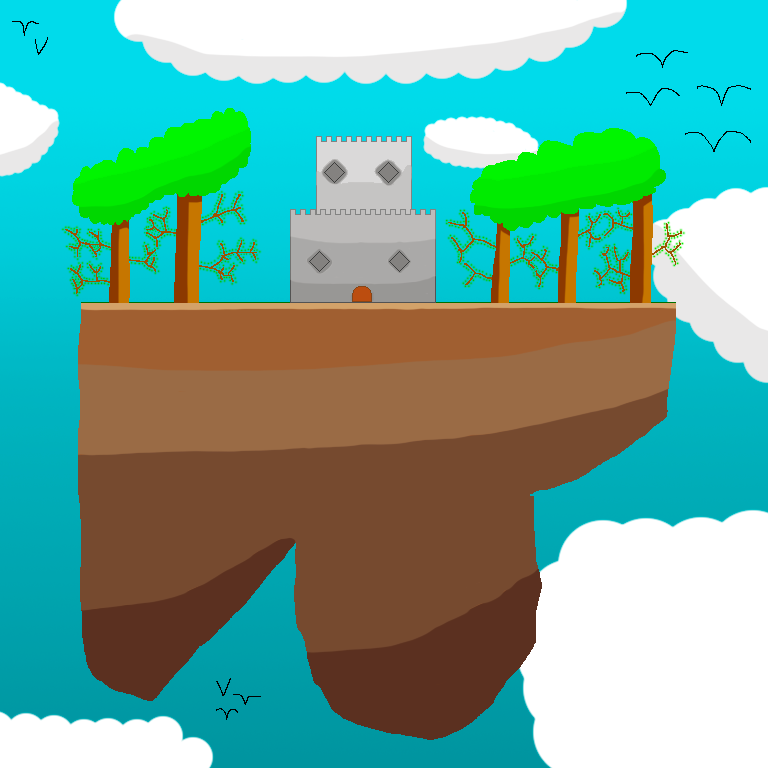Join US
Do you want to build the fantasy world you’ve always dreamed of?
Subscribe to receive notifications when a new post is out and for our monthly newsletter!
You can always unsubscribe anytime.


Fantasy is a large part of our culture. You see it in various forms of media from literature to video games. No doubt seeing them and reading about them inspires you to make one of your own or learn more about the things they’re made up of. You might be thinking what goes into making a fantasy world that’s filled with wonder but at the same time, it feels realistic? And where do I start?
Worldbuilding, at its heart sounds so simple, doesn’t it? You just invent names for characters, kingdoms, and so on and make a story out of it. Making a fantasy world from scratch is so much more than that. In fact, when you stop to think about it, the enormity of doing so sinks in as you realize all the things you have to take into consideration. From the history of the world to the flora and fauna, there’s a ton of things to come up with and honestly, it can feel a bit overwhelming at times.
Our goal here at Viernor is to put all the resources you need to know about fantasy worlds all in one place so you have a wealth of knowledge at your disposal instead of having to look all over for that one piece of information that you just can’t find.
How do I start? That’s an excellent question and before you take another step, you need to think about what comes to mind when you think of fantasy. These worlds are filled with places that seem as if they’re from a bygone era. Castles carved into the mountainside, towers that reach into the skies, and haunted mansions deep within spooky forests. Scenes such as dragons flying over tranquil villages, two wizards furiously hurtling spells at each other, and epic battles in the snow as soldiers face off against demonic creatures can also come to mind.
Imagination is a driving factor in making a fantasy world.
The fantasy genre is rich in imagination and is a popular magnet in today’s media. The Lord of the Rings, The Legend of Zelda, The Elder Scrolls and many others are beloved across the world.
You might be asking yourself, why does the genre draw so many people in? The simple answer is that it offers an escape from reality but I think it’s much more than that. I offer you several significant factors: the characters, immersive landscapes, and the lore.
Worlds such as Hyrule, Skyrim, and Hogwarts not only seem real, they feel real as you follow the characters who call them home around and you uncover their secrets. You come to love and hate characters as they help or hinder the hero as he fights to stop evil from winning. Characters are one of the key elements of making a fantasy world.
Take Frodo Baggins for example in Lord of the Rings. His goal is to take the One Ring into the heart of Mordor and throw it into the fires of Mount Doom but Mordor is the home of the series’ villain Sauron. Sauron is searching for the One Ring so he can dominate Middle-Earth and destroying the Ring effectively ends the threat the Dark Lord poses to Middle-Earth.

The three novels explores Frodo’s journey from his home in the Shire all the way to Mt. Doom and you experience his ups and downs. You cheer as Frodo breaks away from Boromir, who, having succumbed to the Ring’s seduction, attempts to seize it for himself. You get mad when Frodo refuses to toss the Ring in Mt. Doom and takes it for himself, rejecting the task given to him to get rid of the Rid. Ironically enough, the Ring wounds up being destroyed, not by Frodo but Gollum, despite Frodo claiming it for himself.
Frodo is just one of many residents of the vast number of worlds but experiencing what he felt, the actions he took, and the decisions he made, made him relatable and that’s key to making a great character.
Though fantasy tends to focus on black-and-white characters, due to the eternal struggle between good and evil, people who are neither good nor bad tend to be popular. Since they’re not linked to one side, they offer an unique perspective to the central drama unfolding.
Take Geralt in The Witcher series. He cares not about the rumblings of war, preferring instead to protect Ciri and killing monsters and people. He’s an outcast of society simply because he’s a Witcher and he’s perfectly content to be left alone. However, despite his efforts to stay out of the war, he winds up being pulled in. Though he doesn’t like either side, he chooses one for his own reasons. He chooses his side not out of a heroic duty or wanting to save the world but to protect the one he cares about.
Geralt’s popular not because he’s a perfect character but because he’s morally gray. He does things a lot of people find offensive, like killing creatures and people, but he has no qualms doing so. On the other hand, he has a tendency to care about people, Ciri being one, and he will go to great lengths to save them, even if it means killing someone.
Designing memorable characters people love (and hate!) help the process of making a fantasy world fun!
Fantasy worlds tend to be immersive and invite the audience to explore them. Video games do a fantastic job of bringing imagination to reality.
Take Breath of The Wild for example. The game’s incarnation of Hyrule is the largest ever seen in the Zelda series. The moment Link leaves the Shrine of Resurrection, he walks up to the edge of a plateau and sees the vastness of Hyrule. The player controlling Link gasps as he experiences just how large Hyrule is. The player then spots key destination in the distance such as Death Mountain and Akkala Citadel and of course Hyrule Castle where Calamity Ganon lies.
After completing the tutorial phase on the Great Plateau, the player is free to go any direction he wants. If he chooses to follow the story, Kakariko Village would be his next destination. He could make the trek over to Death Mountain and see what that thing crawling on it is. Heck, he could go straight to Hyrule Castle and fight Ganon if he wanted! The freedom to explore every nook and cranny only enhances the game’s appeal and immersion.
Immersion is a key component of making a fantasy world.
Literature accomplishes the same task as video games do as readers imagine what the world looks like in their minds instead of seeing it on a monitor. Reading through the Harry Potter series, descriptions of key places such as Hogwarts and the Burrows fill their minds, enriching their immersion. It feels like these places actually exist and I’m sure a great deal of readers wish that was the case.
One essential element of making a fantasy world is the lore. It serves as the foundation for the story’s setting, regardless of the type of media used to tell it. Without it, the world the story takes place in might as well be nothing. The lore, or mythology as some people call it, shows how the world wound up being in the state it’s in at the beginning of the story. The world’s backstory can also serve as lore.
Let us return to Breath of The Wild. As Link travels across Hyrule, he sees numerous corpses of corrupted Guardians scattered all over, a haunting reminder of the devastation wrought across a great swath of the land a hundred years in the past. Approaching Fort Hateno, Link sees nothing but husks of Guardians and he learns that a great battle had broken out all these years ago.

Equally sobering is the fall of Akkala Citadel. Once thought to be impregnable, the Citadel was where the surviving leadership of Hyrule fled to after Calamity Ganon took over the Castle in a sudden attack. Not long after, the Guardians attacked the Citadel and the fight served as the last battle in the war and the Citadel was soon lost. The fall of the Citadel marked the end of the Kingdom of Hyrule as everyone stationed there lost their lives. The memory of that fateful battle lives on as dead Guardians can be seen all over.
These events, coupled with Ganon seizing control of the Castle, are why the Kingdom of Hyrule doesn’t exist when Link awakens from his century-long slumber. He’s exploring the land where a once-mighty kingdom collapsed.
The lore used in Breath of The Wild shows the tragic fall of Hyrule. Seeing the destruction Ganon and his minions wrecked upon Hyrule only strengthens Link’s resolve to stop him and save Zelda. Having physical reminders of the cause of the Kingdom’s destruction in the form of Guardians is a great example of how to implement lore in the story.
Fantasy is rich in imagination, as I stated earlier. At its heart, it’s about people, places, the lore, and the story. These four things are the cornerstone of great fantasy tales.
Reading this article probably made you realize how much detailing that goes into making a fantasy world. And you gulped at the sheer size of it. But there’s another part of you that won’t be easily deterred from wanting to turn your imagination into reality.
This is the first in a series of articles designed for those of you who aren’t sure where to start making the world of your dreams. Other articles include:
If you’ve read everything up to this point, that means you want to learn everything there is to know about making a fantasy world from scratch. Future articles will delve deeply into the elements of fantasy worldbuilding.
Let me know what you think in the comments below. (Note: this is an account-exclusive feature).
If you don’t have one, you can register here. It only takes a few moments of your time!
Liked this article and want to subscribe? All you have to do is fill out the form below and that’s it!
Thanks for reading this and until the next time,
Sunfire
Subscribing means you receive:
You can always unsubscribe anytime.
Do you want to build the fantasy world you’ve always dreamed of?
Subscribe to receive notifications when a new post is out and for our monthly newsletter!
You can always unsubscribe anytime.